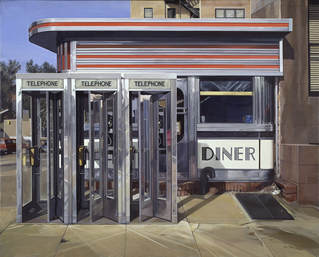On the first afternoon of the conference, I attended the group discussion on "Dickinson on Screen" which mainly focused on Terence Davies' feature-film on Emily Dickinson, "A Quiet Passion." The session was led by Martha Nell Smith (EDIS President), Barbara Dana (an actor who has portrayed Dickinson), Jonnie Guerra (who wrote the EDIS review of the film), and Jane Wald (Executive Director of the Dickinson Museum).
A major sticking point with many in the group centered on whether or not the movie was a "bio-pic," and if a bio-pic, then Davies' film failed in countless ways. Details from the poet's life were either missing, mixed, or mistaken. Too many characters were composites of Dickinson's friends and/or acquaintances. Events from Dickinson's life were either erroneous or engineered. The film, they argued, was just not a true depiction of the poet's life.
One was frustrated -- if not furious -- that Davies hadn't read Dickinson's letters ("There just wasn't time," he's reported to have said). One facilitator who had portrayed Dickinson on the stage was aggravated -- if not angry -- with Cynthia Nixon's portrayal of Dickinson ("Where was the joy?" she asked). Many were troubled -- if not incensed -- by the costumes and accessories ("it looked like they were in the antebellum south -- and they wouldn't have twirled parasols").
| "They wouldn't have twirled parasols," said one of the film's critics -- even though Emily Dickinson wrote of parasols in at least least four of her poems. Here's the opening lines to one of them: It will be Summer - eventually. Ladies - with parasols - Sauntering Gentlemen - with Canes - And little Girls - with Dolls - |
Personally, I enjoyed the film, and I'll write more about my views in future posts. For now, though, I'll finish with a rationale for including the O'Keefe and Estes paintings at the top of the page: O'Keeffe painted her impression of an evening star, and Estes painted a flawless, exact representation of a diner. Do you prefer one over the other? Was O'Keeffe too loose with the details and images that make up an evening star? Was Estes too literal in his rendering of a diner? Do both have merit?
Davies filmed his impression of Dickinson and of 19th-century New England. Whether one thinks he was too loose or too literal (well, of course, most of those in the discussion group wished he had been a little more literal), the film does have merit.
More discussion later! : )




 RSS Feed
RSS Feed
